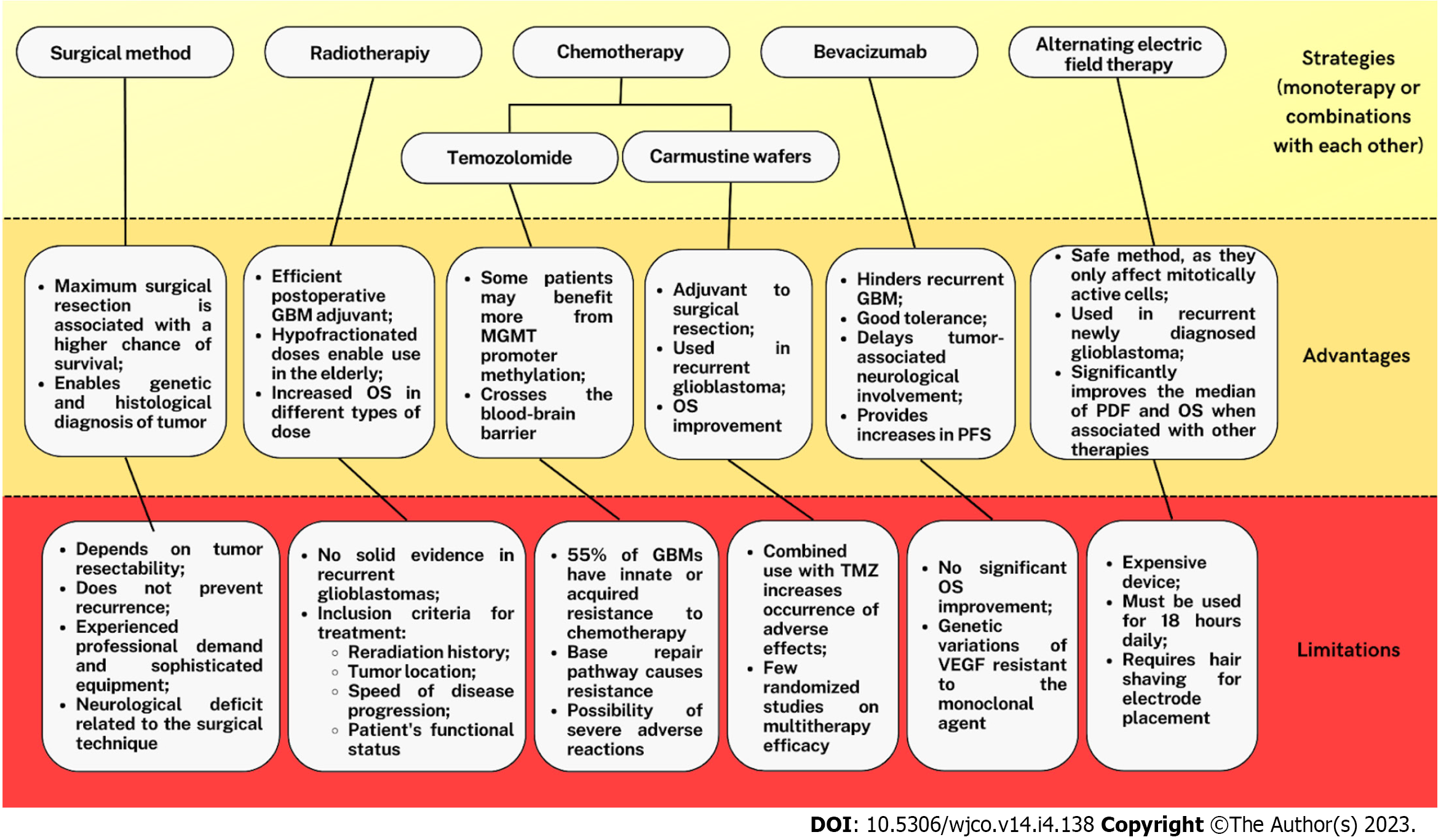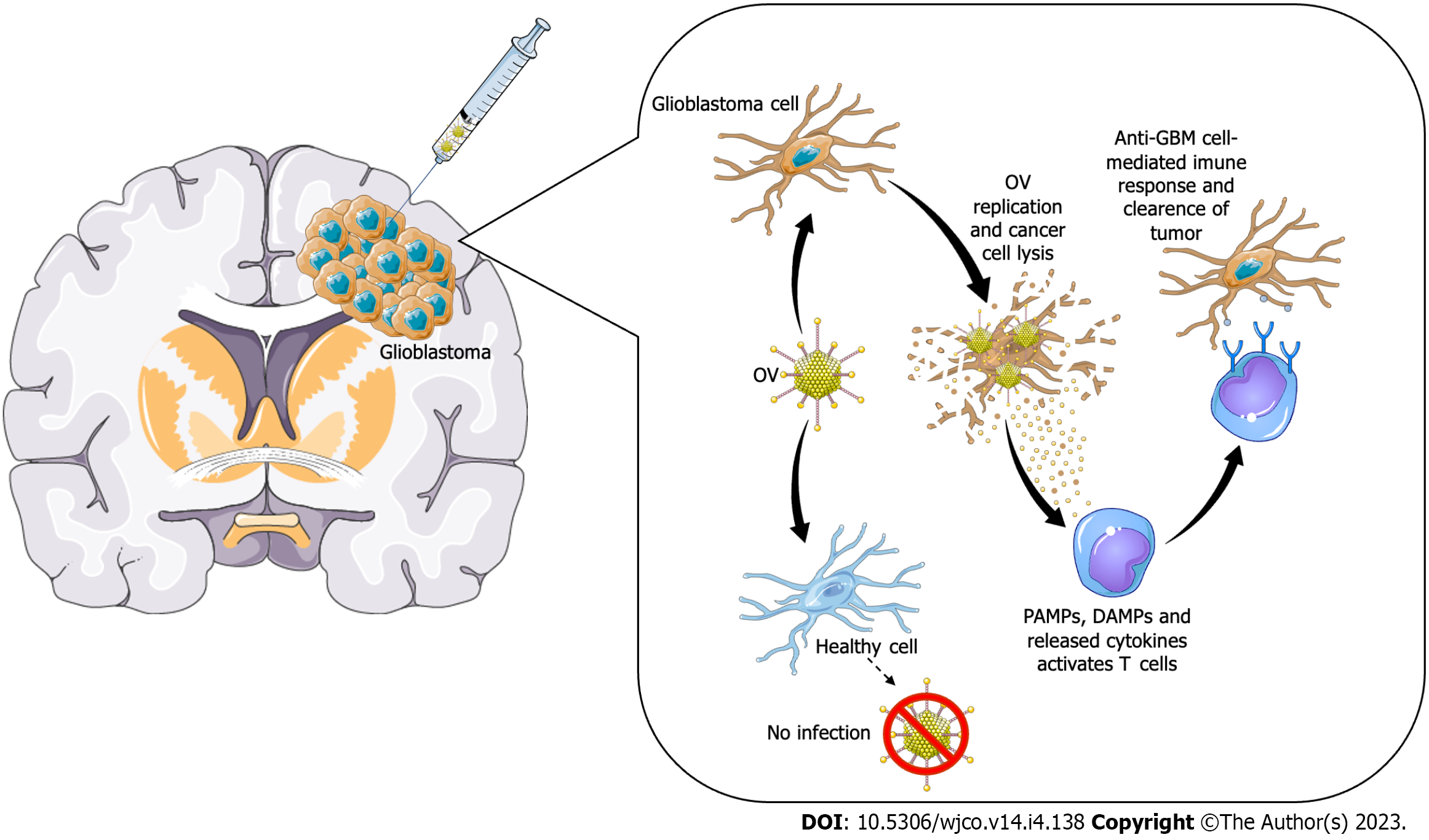Copyright
©The Author(s) 2023.
World J Clin Oncol. Apr 24, 2023; 14(4): 138-159
Published online Apr 24, 2023. doi: 10.5306/wjco.v14.i4.138
Published online Apr 24, 2023. doi: 10.5306/wjco.v14.i4.138
Figure 1 Scheme about current glioblastomas treatment strategies and its advantages and limitations.
GBM: Glioblastomas; OS: Overall survival; PFS: Progression-free survival; TMZ: Temozolomide; VEGF: Vascular endothelial growth factor;
Figure 2 Simplified scheme of glioblastomas-induced immunosuppressive microenvironment.
MDSCs: myeloid-derived suppressor cells; NK: Natural killer. The Figure was partly generated using Servier Medical Art, provided by Servier, licensed under a Creative Commons Attribution 3.0 unported license.
Figure 3 Immune checkpoint inhibition targets: T cell immunoglobulin and mucin domain 3/ Galactin 9, programmed cell death-1/programmed death-ligand 1, and cytotoxic T-lymphocyte-associated protein 4 /CD80 or CD86.
A: T cell immunoglobulin and mucin domain 3/ Galactin 9; B: programmed cell death-1/programmed death-ligand 1; C: cytotoxic T-lymphocyte-associated protein 4/CD80 or CD86. TIM-3: T cell immunoglobulin and mucin domain 3; GAL-9: Galactin 9; PD-1: Programmed cell death-1; PDL-1: Programmed death-ligand 1; CTLA-4: Cytotoxic T-lymphocyte-associated protein 4. The Figure was partly generated using Servier Medical Art, provided by Servier, licensed under a Creative Commons Attribution 3.0 unported license.
Figure 4 Simplified scheme of oncolytic virotherapy for glioblastomas.
GBM: Glioblastoma; OV: Oncolytic virus; PAMPs: Pathogen-associated molecular patterns; DAMPs: Damage-associated molecular patterns. The Figure was partly generated using Servier Medical Art, provided by Servier, licensed under a Creative Commons Attribution 3.0 unported license.
- Citation: Rocha Pinheiro SL, Lemos FFB, Marques HS, Silva Luz M, de Oliveira Silva LG, Faria Souza Mendes dos Santos C, da Costa Evangelista K, Calmon MS, Sande Loureiro M, Freire de Melo F. Immunotherapy in glioblastoma treatment: Current state and future prospects. World J Clin Oncol 2023; 14(4): 138-159
- URL: https://www.wjgnet.com/2218-4333/full/v14/i4/138.htm
- DOI: https://dx.doi.org/10.5306/wjco.v14.i4.138












